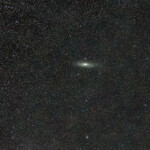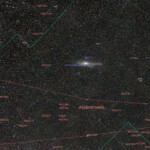The Andromeda Galaxy also known as Messier 31, M31, or NGC 224, is a barred spiral galaxy with the diameter of about 152,000 light-years approximately 2.5 million light-years from Earth and the nearest large galaxy to the Milky Way. The galaxy’s name stems from the area of Earth’s sky in which it appears, the constellation of Andromeda, which itself is named after the princess who was the wife of Perseus in Greek mythology.
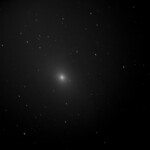
M31, Andromeda galaxy
My very first attempt to capture the Andromeda galaxy with my 9.25″ Schmidt-Cassegrain reflector telescope CPC 925 from Celestron and my Nikon D800 camera.
6 individual RAW exposures stacked with the program Nebulosity in September 2015 in Stuvsta.

M31, M32 and M110
The Andromeda galaxy was first light for my new 94mm APO refractor with focal length 414mm at f/4.5 in Stuvsta, December 2021.
15*2min + 20*30s exposure with ASI 2600MC CMOS-camera and filter IDAS LPS D2.
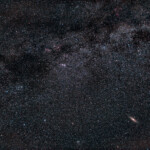
Andromeda galaxy M31 and the Milky Way
A widefield view of the Andromeda galaxy (M31) down right and the Milky Way up top.
Exposure with 35 mm lens on Nikon D800, 23 min in Åva, December 2016..
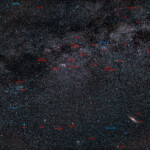
Andromeda galaxy M31 and the Milky Way
A widefield view of the Andromeda galaxy (M31) down right and the Milky Way up top.
Exposure with 35 mm lens on Nikon D800, 23 min in Åva, December 2016..
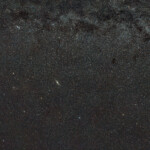
M31 Andromeda galaxy
A widefield view of the Andromeda galaxy (M31) in the middle and the Milky Way up top.
Exposure with 24 mm lens at f/6.3 on Nikon D800, 17*2 min in Åva, August 2021.
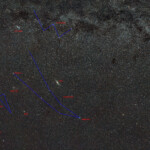
M31 Andromeda galaxy
A widefield view of the Andromeda galaxy (M31) in the middle and the Milky Way up top.
Exposure with 24 mm lens at f/6.3 on Nikon D800, 17*2 min in Åva, August 2021.
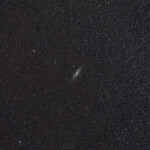
Andromeda galaxy M31 och Triangulum galaxy M33
This is roughly what the Andromeda and the Triangulum galaxies would look like with the naked eye.
Exposure with 50 mm lens at f/2.8 on Nikon D800 and Astrotrac, 19*1min and 4*2min in Åva, October 2020.
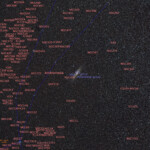
Andromeda galaxy M31 och Triangulum galaxy M33
This is roughly what the Andromeda and the Triangulum galaxies would look like with the naked eye. There is quite a number of other interesting objects in the surroundings of M31.
Exposure with 50 mm lens at f/2.8 on Nikon D800 and Astrotrac, 19*1min and 4*2min in Åva, October 2020.
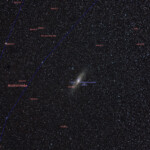
M31 Andromeda galaxy
Another widefield view of the M31 Andromeda galaxy..
Exposure with 85 mm lens at f/2.8 on Nikon D800 and Astrotrac, 19*2min in Åva, October 2020.
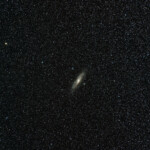
M31 Andromeda galaxy
Another widefield view of the M31 Andromeda galaxy..
Exposure with 85 mm lens at f/2.8 on Nikon D800 and Astrotrac, 19*2min in Åva, October 2020.
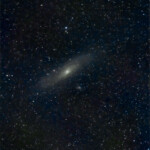
Andromeda galaxy M31 with satellite galaxies M110 and M32
Close up of the M31 Andromeda galaxy.
6*90s with Nikon D800 and 200mm f/5.6 with Astrotrac and the camera in DX mode, i.e. equal to 300mm. Åva on December 30th 2015.
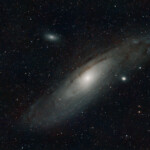
M31, M32 and M110
The Andromeda galaxy M31 with satellite galaxy M110 to the left and M32 to the right.
6*60s exposure with APO107 refractor and Nikon D800
in Stuvsta, September 2016
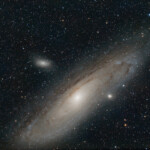
M31, M32 and M110
Andromeda galaxy, M31.
42min exposure with APO107 refractor and Nikon D800
in Åva, October 2016
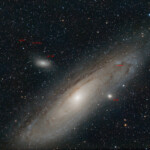
M31, M32 and M110
Andromeda galaxy, M31.
42min exposure with APO107 refractor and Nikon D800
in Åva, October 2016
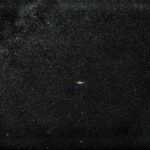
M31, Andromeda Galaxy
M31 photographed with 35mm Nikkor lens on Nikon D800 DSLR camera in September 2023. Exposure was 20 * 30s at ISO800 and f 2.8.
